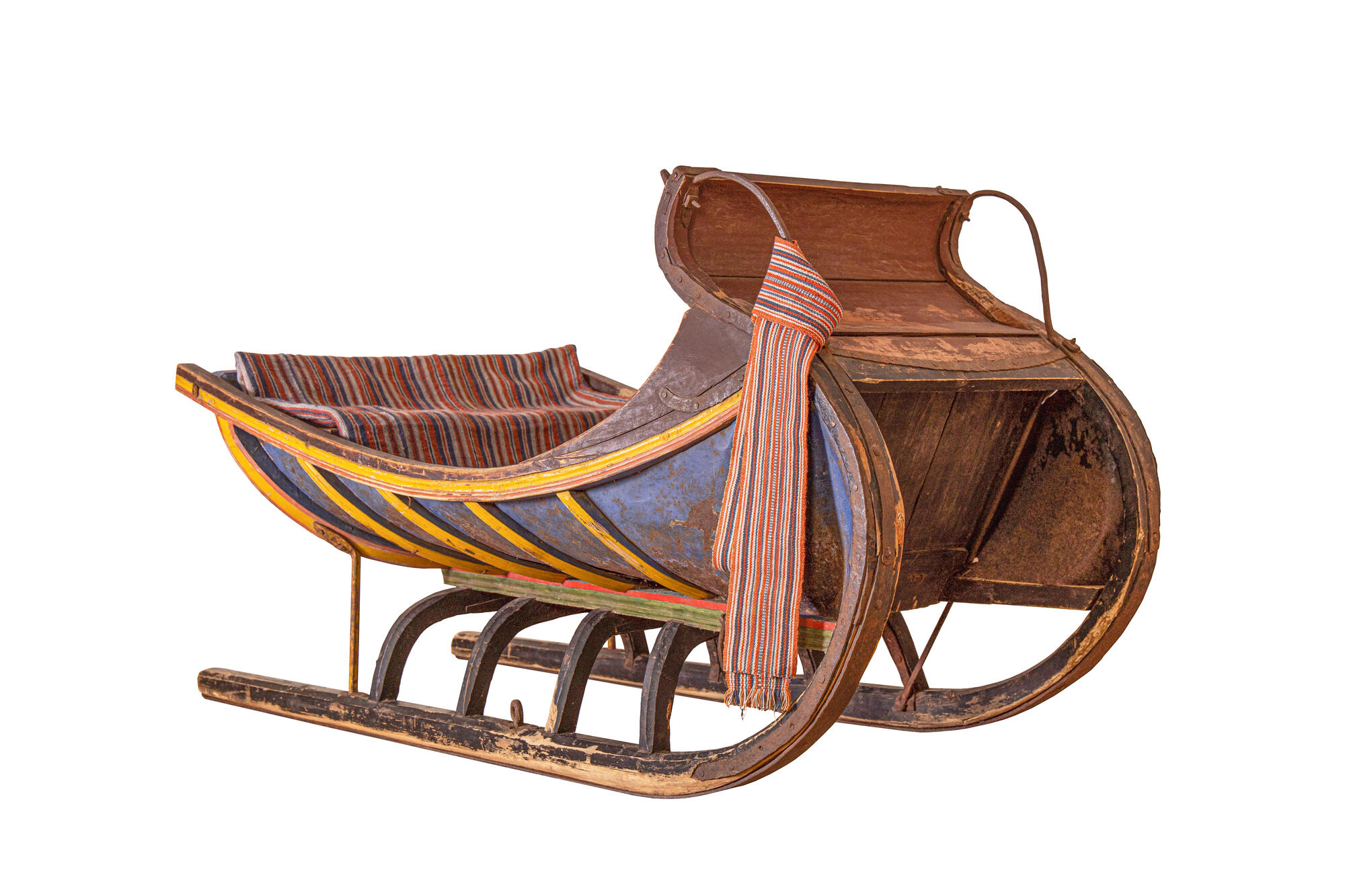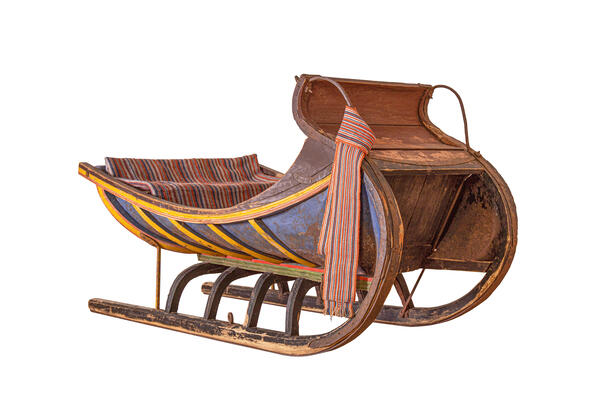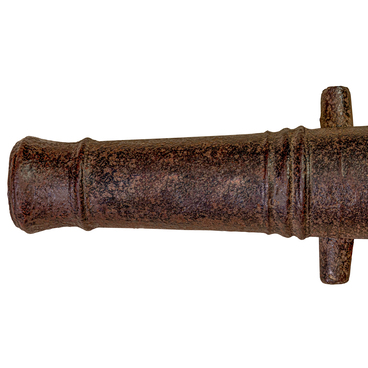In the Kargopol district of the Olonets province, one of the most developed trades was making carts and carriages. At the beginning of the 20th century, there were 115 craftsmen who were engaged in manufacturing wood-slegdes, sleighs, carts, travelling carriages.
The Sergiev Posad Museum contains a unique painted sleigh of the second half of the 19th century, created by Kargopol craftsmen. The sleigh was used for trips and rides on holidays and on special ceremonial occasions. “People in Kargopol spend the winter having fun every Sunday and holiday sledding along the streets: Kamenka and Ivanovskaya; skating begins shortly after lunch, i.e. at two o’clock and continues until the evening, until six o’clock… During Maslenitsa, they ride in a row of 4 for about 2 verstas (2.13 kilometers), ” the ethnographer S. Korablev wrote in the middle of the 19th century.
The sleigh was purchased during a scientific expedition in 2003. Previously, they were located in the ancient village of Priluki, on the left bank of the Onega River, 126 km from Kargopol. The sleigh has a traditional design of two curved wooden skids, with a high back and front. They are decorated with bright floral painting. The influence of the translated publications and the porcelain style, popular in the middle of the 19th century, is noticeable in the paintings.
The painting on the back of the sleigh is made on a green background: three large white figured medallions of petal shape depict a flowerpot and two baskets with bouquets of flowers on either side of it. The bouquets are made up of lush pink-red roses, multi-petalled garden flowers and buds, large green leaves. The painting organically combines pictorial and graphic techniques. The lightness of the whitewashed brushstrokes, the accuracy of lines and contour strokes that convey volumes and shapes, testify to the professionalism of the master, his urban origin and education.
According to the inscription on the back of the sleigh “Tomilova A. E. “, it can be assumed that it was made to order and was part of the dowry of a wealthy bride. The predominance of lush pink-red roses and buds in the painting is not accidental — the image of a blooming garden is associated with the wedding symbols of that time.
The Sergiev Posad Museum contains a unique painted sleigh of the second half of the 19th century, created by Kargopol craftsmen. The sleigh was used for trips and rides on holidays and on special ceremonial occasions. “People in Kargopol spend the winter having fun every Sunday and holiday sledding along the streets: Kamenka and Ivanovskaya; skating begins shortly after lunch, i.e. at two o’clock and continues until the evening, until six o’clock… During Maslenitsa, they ride in a row of 4 for about 2 verstas (2.13 kilometers), ” the ethnographer S. Korablev wrote in the middle of the 19th century.
The sleigh was purchased during a scientific expedition in 2003. Previously, they were located in the ancient village of Priluki, on the left bank of the Onega River, 126 km from Kargopol. The sleigh has a traditional design of two curved wooden skids, with a high back and front. They are decorated with bright floral painting. The influence of the translated publications and the porcelain style, popular in the middle of the 19th century, is noticeable in the paintings.
The painting on the back of the sleigh is made on a green background: three large white figured medallions of petal shape depict a flowerpot and two baskets with bouquets of flowers on either side of it. The bouquets are made up of lush pink-red roses, multi-petalled garden flowers and buds, large green leaves. The painting organically combines pictorial and graphic techniques. The lightness of the whitewashed brushstrokes, the accuracy of lines and contour strokes that convey volumes and shapes, testify to the professionalism of the master, his urban origin and education.
According to the inscription on the back of the sleigh “Tomilova A. E. “, it can be assumed that it was made to order and was part of the dowry of a wealthy bride. The predominance of lush pink-red roses and buds in the painting is not accidental — the image of a blooming garden is associated with the wedding symbols of that time.



